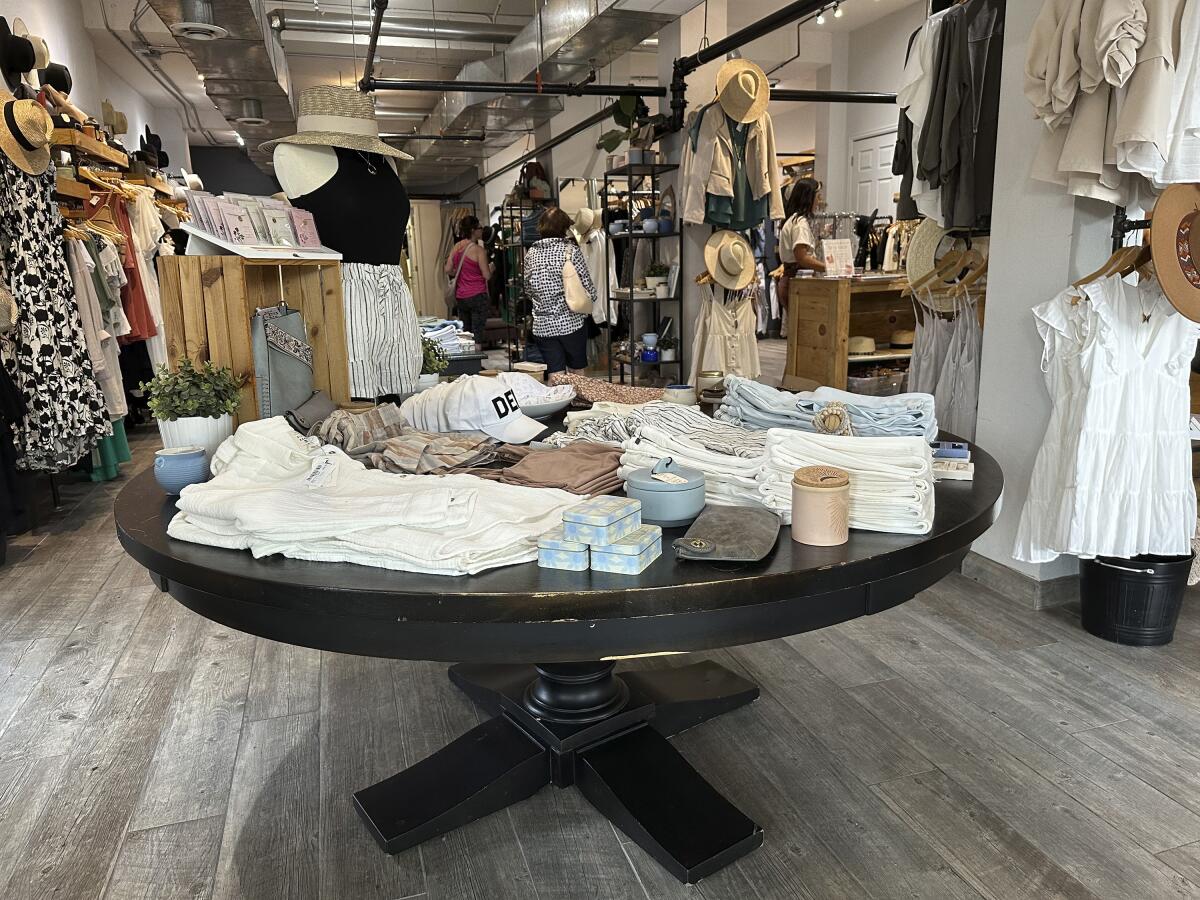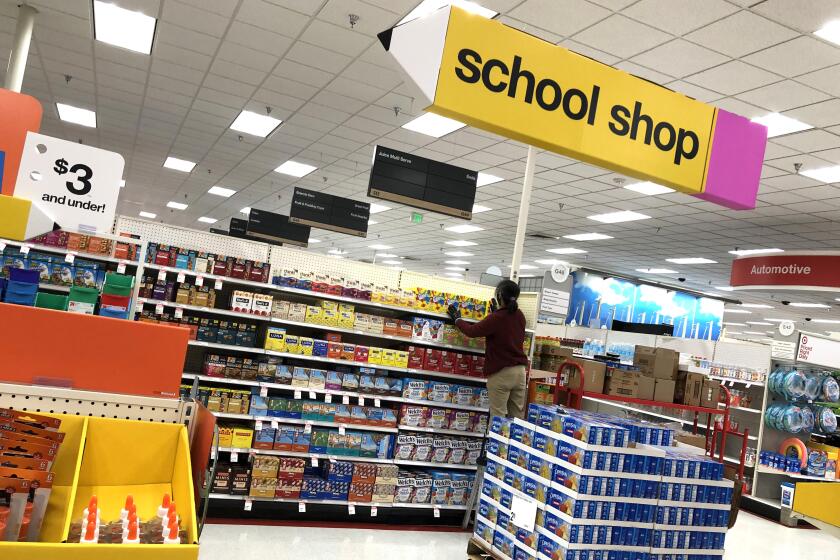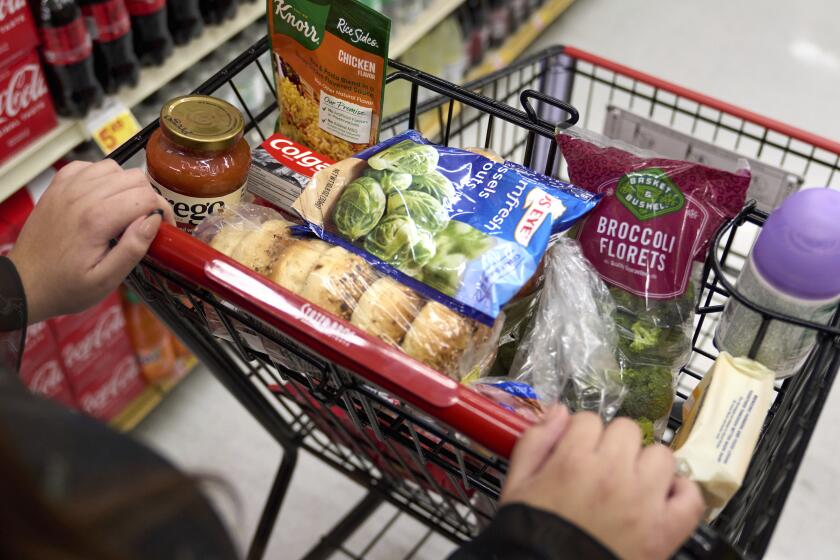Consumers keep spending freely, powering a resilient economy

Americans increased their purchases at retailers last month — for clothing, dining out, online goods and other items — in a sign that solid consumer spending is still powering a resilient U.S. economy.
Retail sales rose a better-than-expected 0.7% in July from June, according to the Commerce Department’s report Tuesday. The gain was higher than a revised 0.3% increase the previous month and marked four straight months of increases. The figure also surpassed the 0.2% increase in consumer prices last month, indicating that shoppers are spending at a healthy pace.
Analysts noted that spending on Amazon Prime Day, the online juggernaut’s big two-day sales event that took place earlier last month, also helped boost online sales.
Excluding autos and gas, sales rose a solid 1%. A closely watched category of retail sales that excludes auto dealers, gas stations and building materials and feeds into the gross domestic product jumped 1% last month compared with the prior month, the biggest move in six months, analysts said.
“Maybe it’s a one-off, but Americans put aside their penny-pinching ways and spent big on food and fun in July,” said Robert Frick, corporate economist with Navy Federal Credit Union, in a note published Tuesday.
Any stigma of buying fashion secondhand is gone. Shoppers are running mini resale businesses as the investment value of certain luxury brands has soared.
Department stores posted a 0.9% increase, while clothing and accessories stores had a 1% gain. Sales at sporting goods stores and hobby stores rose 1.5%. At restaurants, sales rose 1.4%, while online sales rose 1.9%.
But higher interest rates are weighing on economic activities that are highly dependent on credit, such as sales of homes, vehicles, furniture and electronics, according to Bill Adams, chief economist for Comerica Bank in Dallas. Furniture and home furnishings stores and electronics stores remained weak, registering declines. And sales at motor vehicle and parts dealers also were down from the prior month.
Still, the data reflect the economy’s resiliency despite a challenging economic environment of high prices and higher interest rates that make borrowing on credit cards and getting a mortgage more expensive. Spending has been volatile this year after surging nearly 3% in January. Sales tumbled in February and March before recovering in April and May.
The report comes as inflation has cooled but not enough to meet the Federal Reserve’s target rate.
Inflation in the United States edged up in July after 12 straight months of declines. But excluding volatile food and energy costs, so-called core inflation matched the smallest monthly rise in nearly two years. That’s a sign that the Federal Reserve’s interest rate hikes have continued to slow price increases.
Some teachers are turning to social media to afford supplies and help make their classrooms more equitable.
The inflation data the government reported last week showed that overall consumer prices rose 3.2% from a year earlier. The latest figure remained far below last year’s peak of 9.1%, though still above the Fed’s 2% inflation target.
Overall prices, measured on a month-to-month basis, rose 0.2% in July; roughly 90% of it reflected higher housing costs. Excluding shelter, Paul Ashworth of Capital Economics calculated that core prices actually fell 0.1% from June to July.
A slew of earnings results from big companies such as Walmart, Target and Macy’s this week and next should offer some more clues on shoppers’ mind-set and how they will manage inflation and higher interest rates in the latter half of the year, including the crucial holiday season.
Moreover, a student loan moratorium — which allowed Americans to divert money that used to go to loan payments to dinners out and new furniture — ends later this year.
Home Depot, the nation’s largest home improvement retailer, on Tuesday reported second-quarter results that topped profit and sales expectations, but sales continued to decline as inflation and soaring interest rates play a larger role in Americans’ spending choices.
Consumers are switching grocery stores, brands and ingredients as they try to cope with the cost of food.
Despite the stronger-than-expected sales figures, Home Depot stuck to previous guidance for the year, seeing sales decline between 2% and 5%, after lowering its forecast in the last quarter.
At least one retailer is already kicking off holiday sales earlier than last year to get shoppers to spend.
Lowe’s, the nation’s second-largest home improvement retailer, started offering some holiday merchandise such as wreaths and other home decor online last month, roughly two months earlier than a year ago, as it saw shoppers begin searching online for holiday items this summer, according to Bill Boltz, Lowe’s executive vice president of merchandising.
The government’s monthly retail sales report offers only a partial look at consumer spending; it doesn’t include many services, including healthcare, travel and hotel lodging.
AP writers Paul Wiseman and Michelle Chapman contributed to this report.
More to Read
Inside the business of entertainment
The Wide Shot brings you news, analysis and insights on everything from streaming wars to production — and what it all means for the future.
You may occasionally receive promotional content from the Los Angeles Times.













